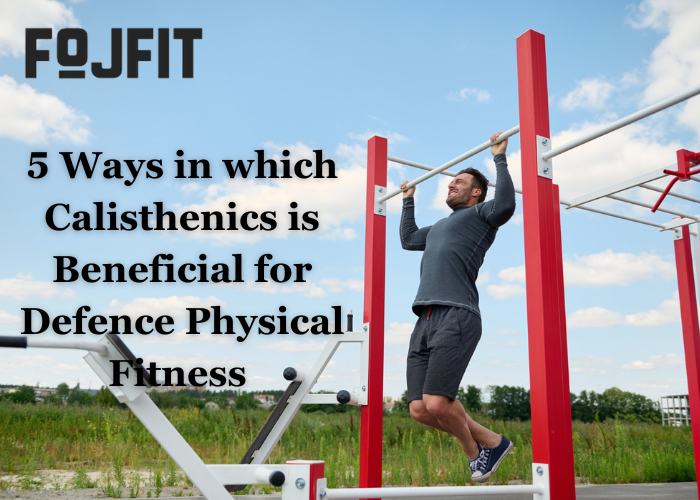Indian defence forces are recognized for their stringent fitness routines. The strength, stamina, endurance, and other physical capabilities of Indian soldiers are in an extraordinary league, enabling them to safeguard the motherland from the perpetrators of terrorism and dangerous circumstances. Their ability to successfully protect the borders even in challenging geographic terrains, including Siachen in the North and Thar in the West, is the result of their meticulous physical training and mental fortitude. The physical training in the military is a combination of diverse time-tested exercises that work on different aspects of physiology and enhance the strength, stamina, endurance, and balance in soldiers. One of the best examples is military calisthenics workouts. Even when civilians like us think of calisthenics, we imagine a soldier climbing a rope or performing trunk twists in daily fitness drills. And calisthenics is exactly that! It is one of the most-followed army body weight workouts incorporated into the fitness regimen of defence candidates and soldiers. Moreover, it requires no equipment and is one of the most effective forms of exercise to build muscle strength and endurance.
Benefits of Calisthenics for Defence Physical Fitness
Calisthenics is a group of exercises that uses body weight and leverages gravity to build and strengthen diverse muscle groups. It is a full-body workout that consists of compound movements that improve functional strength, build lean muscle mass, and enhance mobility to reduce the risk of injuries. Calisthenics uses the body as a unit, puts your small and muscle groups to work, and transforms it into army material. This exercise puts individuals’ body weight as resistance, enabling the soldiers to adapt to any situation with little amount of rest.
1. Enhanced Functional Strength
Calisthenics does not require equipment and includes workouts that mimic real-world physical activities encountered in defence situations. This group of exercises involves push-ups, pull-ups, squats, jumps, lunges, etc., that help in defence tasks, including lifting heavy equipment or objects or climbing obstacles. It also helps to maintain good posture, transfer power between the upper and lower body, and prevent injuries. Another quality that makes Calisthenics stand out is the ease of performance. This set of exercises can be performed in any setting without the use of equipment, hence making it easy for soldiers to maintain their muscular strength no matter where they are – barracks, field camp, or remote deployment.
2. Improved Mobility
A significant percentage of defence physical fitness focuses on improving the mobility of soldiers because it provides them with a tactical advantage to quickly maneuver the battlefield and flank enemy positions. Calisthenics exercises, including deep squats, lunges, and active leg raises, improve flexibility and joint stability, allowing military personnel to adapt to and deliver maximum output in unexpected terrains. This adaptability empowers them to extend their reach and surveillance over a wide area. From engaging in offensive operations and reaching troops for support in a timely manner to adapting to hybrid warfare, the improved mobility of candidates allows them to maintain consistent performance and operational effectiveness in rugged and unexplored landscapes.
3. Optimum Muscle and Joint Health
The utilization of weight in resistance training can put stress on soft tissues, therefore causing injuries in the body. Contrarily, calisthenics only utilizes body weight and develops your strength and size in proportion to your muscular system through natural physical movements. Through weight-bearing exercises, including squats, push-ups, and pull-ups, it bears weight through the bone, resulting in adequate bone density. Exercises like deep squats and lunges improve flexibility, reduce stiffness, and allow soldiers to move their joints in a full range of motion. Good bone and joint health contribute to the operational effectiveness of soldiers and enhance their ability to execute challenging missions by improving their resilience.
4. Better Core Strength
Calisthenics exercises, including planks and hollow holds, improve core strength, kinesthesia, and coordination, enhancing the ability of defence personnel to perform assignments requiring balance and stability under pressure. By activating the core, soldiers can achieve a fitting body position and move more efficiently and safely. Since military personnel engage in strenuous physical activities, such as carrying heavy loads and performing tactical maneuvers, it is significant to develop a strong core. In case of blunt attacks, a strong core can act as a shield and protect the vital organs from suffering damage. Even while preparing for a defence physical fitness exam, such as NDA, it is recommended to work on core strength by indulging in exercises, such as Russian twists, mountain climbers, flutter kicks, leg raises, and planks.
5. Mission-Specific skills
Since calisthenics mimic daily life movements, they can be modified to enhance soldiers’ preparedness and effectiveness across diverse operational environments and mission locations. For instance, soldiers can enhance their maneuvering skills in confined spaces through bear crawls and bodyweight squats. So, how does it work? Well, exercises like pistol squats, jump squats, step-ups, and lunges strengthen the leg muscles for crouching and moving in low-profile stances and maintain stability and balance in confined spaces. So, calisthenics can be leveraged to enhance the physiological capabilities to develop mission-specific skills and deliver optimum performance for mission success. Additionally, calisthenics training can be utilized to stimulate real-world mission scenarios and replicate physical stresses to prepare the candidates for unexpected situations by enhancing their strength, endurance, and resilience.

Takeaway
Calisthenics is a wholesome exercise that benefits multiple areas of the body. It has been incorporated into the fitness regimen of soldiers to maximize their physical capabilities and prowess to perform at maximum efficiency. In addition to soldiers, civilians can also improve their fitness by undergoing calisthenics training. In recent times, there are multiple physical fitness apps for personalized workouts that help you tailor your fitness routine and incorporate those exercises that align with your fitness needs. While the intensity of calisthenics performed by soldiers is higher, people like us can start slowly and progress as conveniently. In conclusion, calisthenics is a beneficial group of exercises with immense physiological benefits and is preferred by soldiers and civilians alike.


